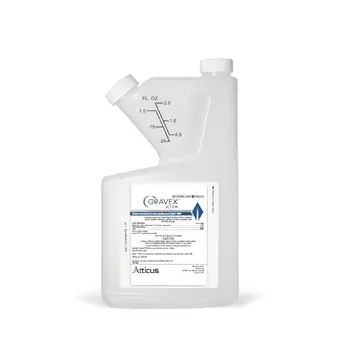Imagine a world where the food we eat is constantly under attack by microscopic foes. These foes, known as fungi, have the potential to wreak havoc on our agricultural bounty. Enter myclobutanil as a fungicide, agriculture’s unsung hero. This powerful chemical compound steps into the battle, shielding crops and ensuring a healthy harvest.
Myclobutanil isn’t just a fungicide; it’s a promise of protection, a symbol of science working in harmony with nature. It’s a story worth telling, and that’s precisely what we’re about to embark upon.
Chemical Characteristics: The Building Blocks
At the heart of myclobutanil’s success as a fungicide are its unique chemical characteristics. Let’s dive into the essence of its molecular structure:
- Chemical Formula: C15H17ClN4O2
- Solubility: Soluble in water at 142 mg/L at 25°C, miscible with organic solvents
- Stability: Stable under normal storage conditions, with a half-life ranging from days to months, depending on environmental factors
The unique molecular design makes it a perfect warrior against several fungal pathogens, giving it an edge in the battle against plant diseases.
How Myclobutanil Works as a Fungicide: A Mechanistic Dance
The efficacy of myclobutanil as a fungicide isn’t mere coincidence; it’s science in action. By targeting the ergosterol biosynthesis pathway in fungi, myclobutanil launches a precise attack, disrupting the fungal cell membrane’s integrity.
This disruption leads to the impairment of fungal growth, development, and reproduction, thus controlling the disease. The elegance of this mechanistic dance is a testament to human ingenuity in harnessing chemistry for the greater good of agriculture.
Applications and Uses in Agriculture: A Versatile Ally
The world of agriculture is diverse and ever-changing, and myclobutanil fits right in. From fruits to ornamentals, myclobutanil finds its place:
- Apple Orchards: Control of apple scab, powdery mildew, and cedar apple rust
- Grapes: Effective against powdery mildew, botrytis, and black rot
- Turfgrass: Protection against dollar spot and brown patch
- Ornamentals: Management of a wide range of fungal diseases in nurseries and greenhouses
The versatility of myclobutanil as a fungicide makes it an indispensable tool in modern farming, highlighting the integral role of chemistry in sustaining our food supply.
Environmental and Health Considerations: Balancing Act
With great power comes great responsibility. Using myclobutanil as a fungicide is no exception. It’s essential to recognize the balance between effective disease control and environmental and health safety.
Human Toxicity
Myclobutanil is considered to be of moderate toxicity to humans. Proper handling, use of protective equipment, and adherence to the guidelines on the product label can minimize risks. Common symptoms of overexposure may include nausea, headaches, or skin irritation.
Environmental Impact
The environmental fate of myclobutanil largely depends on the conditions of its use. While it does not significantly accumulate in aquatic organisms, care must be taken to avoid contamination of water bodies. Its effect on non-target organisms like beneficial insects should also be carefully considered.
Safety Precautions
Safety is paramount when using any chemical, including myclobutanil. Here are some key safety tips:
- Always read and follow the label instructions
- Wear appropriate protective gear such as gloves and eye protection
- Store in a cool, dry place away from children and pets
- Dispose of containers and residues according to local regulations
Regulations and Compliance: Navigating the Legal Landscape
Navigating the regulatory landscape of myclobutanil as a fungicide requires attention to detail and compliance with various international and local laws.
Registration and Approval
Myclobutanil is registered and approved for use in many countries, subject to specific conditions and limitations. Regulatory authorities continuously monitor and evaluate its safety and effectiveness, ensuring that it meets the stringent standards set for agricultural chemicals.
Legal Considerations
Legal considerations, such as licensing and permissible use levels, differ from jurisdiction to jurisdiction. Familiarizing oneself with local regulations and obtaining necessary permits ensures that the application of myclobutanil complies with all relevant laws and guidelines.
Conclusion: A Journey into Myclobutanil’s World
Our journey into the world of myclobutanil as a fungicide has been an exploration of science, application, safety, and regulation. From the microscopic battles it wages against fungi to the vast landscapes it protects, myclobutanil stands as a testament to human innovation in agriculture.
Whether you’re a farmer, gardener, or simply curious about the science behind the food we eat, understanding myclobutanil’s role offers insight into a complex and fascinating aspect of our daily lives. Let’s continue to explore, learn, and grow, responsibly and sustainably, with the tools that science provides us.



